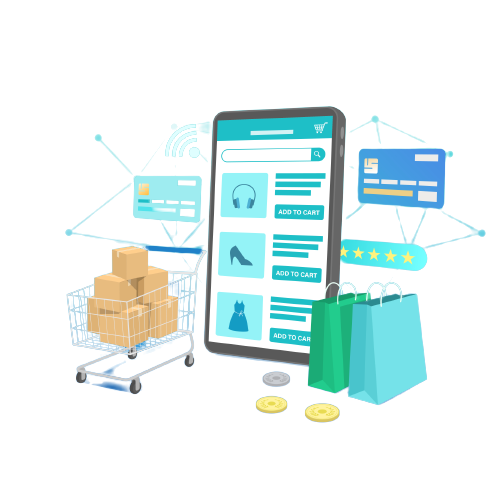
How to Sell Online from Your Offline Store: A Step-by-Step Guide
Å Expanding your offline store can create enormous growth opportunities in the electronics market. As consumers increasingly turn to the convenience of online shopping. This movement may reduce your sales. Reduce brand visibility and giving consumers the freedom to shop at their convenience. Here’s how to make the transition smooth and successful.
1. Choose the right ecommerce platform
The first step is choosing an ecommerce platform to house your online store. Some popular options include:
- Shopify: Praised for its user-friendliness and wide selection of customizable features.
- WooCommerce: Ideal if you have a WordPress website and want a free plugin that is very flexible.
- BigCommerce: Ideal for large operations with limited scalability.
- Etsy or Amazon: If you want to sell on an existing marketplace rather than creating your own website. When choosing a platform You should evaluate the user friendliness, features, customization options. and a price structure that meets your needs.
2. Control stock of products
Stock information needs to be synchronized between the online and offline stores. Users expect the latest stock information. Here is how to spend it.
- POS Integration: In some eCommerce platforms, you can integrate your POS system to your online shop. The list will be the same both in the systems.
- Inventory Software: use tools-square, Lightspeed, or Vend. Used for updating real time inventory across online and off line channels.
- Manual update: In case you do not want an automated solution, you will update your online inventory based on your off-line sales.
3. Set Up Payment Methods
- PayPal
- Stripe
- Square: Observation Ensure that the payment methods you offer are secure and diverse, allowing customers to pay with their preferred method.
4. Create a user-friendly website
The customer experience in your online store is important. For better sales:
- Mobile responsiveness: Make sure your website works well on smartphones, as many customers browse and buy through mobile devices.
- Simple guidance: Provide content with clear categories and a search option that customers can access.
- Product pages: High-quality images, detailed product descriptions, and clear pricing are essential.
- Faster loading time: Customers can leave their cart on a slower website.
5. Shipping and Fulfillment
Decide how you want to handle fractions and complements. Other options include:
- Inhouse Fulfillment: Receive orders directly from your store or warehouse.
- Third-Party Fulfillment: Use a company like ShipBob or Amazon FBA to handle the storage, packing, and shipping of your products.
- Click and Collect: Bring your online and offline business together by allowing customers to shop online and download in stores. Establish clear guidelines regarding delivery times, fees, and returns to ensure consistent delivery.
6. Market Your Online Store
When your online store is live You need to buy your store. Here are some of the market-driven strategies:
- Social media marketing: Use platforms like Instagram, Facebook, and Pinterest to market your products.
- Email Marketing: Build an email list and offer campaigns, new products, or special offers.
- Search Engine Optimization (SEO): Optimize your site for search engines using the right search terms. This ensures that worthwhile content is loaded and delivered quickly.
- Paid advertising: Advertise on platforms like Google Ads or social media to target specific customer demographics.
7. Customer Service
Customer service remains vital in an internet setting. Offer numerous aid channels, inclusive of:
- Live Chat: Assist customers in real time.
- Email Support: Ensure timely responses to inquiries.
- FAQs and Return Policies: Post clear statistics on returns, delivery, and product guarantees.
8. Analyze and Optimize
Once you’re selling on-line, frequently examine your sales and consumer conduct. Tools like Google Analytics and the built-in metrics from e-trade structures let you understand:
- Which merchandise are famous.
- The assets of your internet site site visitors.
- Conversion rates and customer conduct.
Use this facts to make informed selections about pricing, marketing, and inventory control.
You should follow these steps quite perfectly as an extension of your more conventional business into the virtual realm. Opening an online store is relatively straightforward and offers great opportunities to talk to new clients and expand your business.




